Physical Address
304 North Cardinal St.
Dorchester Center, MA 02124
Axenfeld-Rieger syndrome (ARS) comprises a collection of anterior segment disorders that are complicated by secondary glaucoma in more than 50% of cases.
ARS is an umbrella term used to describe a spectrum of anterior segment findings including posterior embryotoxon, iris hypoplasia, corectopia, and pseudo polycoria. Associated systemic abnormalities involve midline structures.
ARS is a dominantly inherited disease with genetic heterogeneity. Mutations in FOXC1 and PITX2 lead to this condition.
Disorders related to development of the anterior segment include a wide range of diseases such as primary congenital glaucoma, aniridia, and posterior polymorphous dystrophy. This chapter focuses only on Axenfeld-Rieger syndrome (ARS), although some feel that ARS and Peters anomaly are part of a single disease spectrum. Rarely, both of these diseases can be found within the same family. There have also been reports of patients with Peters anomaly having mutations in genes known to cause ARS. , Despite this overlap, this chapter treats ARS and Peters anomaly as separate diseases because, although they may occur together, that is not common.
The terminology of ARS, Peters anomaly, and related diseases is an area of much confusion, largely because of the variability of how they are split into large or small overlapping entities.
Historically, several terms have been used to group these conditions and other anterior segment developmental disorders. Anterior chamber cleavage syndrome was popularized by Reese and Ellsworth in 1966. This term is no longer considered accurate because there is no evidence that the anterior segment develops by cleavage of the cornea from the iris and lens. Anterior segment dysgenesis fails to separate these diseases from other diseases such as primary congenital glaucoma and aniridia. The term mesodermal dysgenesis is inaccurate because the embryonic origin of the angle structures is from neural crest cells, not mesoderm. The neural crest origin has led some to suggest the term neurocristopathy .
Splitting the diseases can also be confusing. Often, cases with features of ARS but minor variations from the typical picture have been given entirely new disease names. This has led to terms such as iridogoniodysgenesis anomaly , iridogoniodysgenesis syndrome , and familial glaucoma iridogoniodysplasia . Some consider ARS according to its component pieces: Axenfeld anomaly (if changes are confined to the angle without abnormalities of the iris), Rieger anomaly (if there are abnormalities of the iris as well as the angle), and Rieger syndrome (if there are associated nonocular features such as dental, maxillary, or umbilical abnormalities). Adding to the confusion is the term Axenfeld syndrome , which is Axenfeld anomaly with glaucoma.
In 1985, Shields and colleagues made a strong argument for lumping together Axenfeld anomaly, Rieger anomaly, Rieger syndrome, and related diseases (not including Peters anomaly) under the heading of ARS based on their overlapping clinical features. We supported this recommendation based on the molecular genetics of these conditions. Most recently, some refer to ARS as types 1, 2, and 3, based on the genetic cause ( Table 56.1 ).
| Classification | Chromosomal Locus | Gene | MIM Number |
|---|---|---|---|
| Axenfeld-Rieger Syndrome type 1 | 4q25 (RIEG1) | PITX2 | 601542 |
| Axenfeld-Rieger Syndrome type 2 | 13q14 (RIEG2) | Not identified | 601499 |
| Axenfeld-Rieger Syndrome type 3 | 6p25 (RIEG3) | FOXC1 | 601090 |
Vossius published the first known report of a patient with probable ARS in 1883. He described a 9-year-old girl with ectopic pupils and full-thickness iris stromal defects. This patient was also missing several teeth. In 1920, Axenfeld reported a patient with a white line in the peripheral cornea approximately 1 mm from the limbus, which he called ringlinie . He also noted iris strands adherent to this peripheral corneal line. Axenfeld termed this condition embryotoxon cornea posteriorius . This patient also had iris stromal hypoplasia with an iris defect.
In 1934, Rieger described two patients with iris hypoplasia and other ocular and systemic abnormalities. One of the patients had abnormal tissue in the iridocorneal angle. This patient also had elevated intraocular pressure, which was treated with a cyclodialysis procedure. In 1935, Rieger provided a detailed report of the ocular features of the disease that bears his name and also provided excellent illustrations. He described a mother and two children who had hypoplasia of the anterior iris stroma and ectopic pupils, which he called dysgenesis mesodermalis corneae et iridis .
A clear or white line in the peripheral cornea is a hallmark of ARS. This line is termed posterior embryotoxon ( Fig. 56.1 ). It can appear over the entire circumference of the cornea or can be confined to a few clock hours. At the slit lamp, posterior embryotoxon is most readily seen in the temporal cornea. Sometimes adherent strands of iris can be observed on slit lamp examination. On histopathologic examination, the embryotoxon consists of collagen with ground substance that is covered by spindle-shaped cells ( Fig. 56.2 ). Although most patients with ARS have a visible posterior embryotoxon on slit lamp examination, this is not universal. In a large series reported by Shields, 5 of 24 patients with ARS had no embryotoxon visible on slit lamp examination but all had embryotoxon visible on gonioscopy. The corneal endothelium was normal.
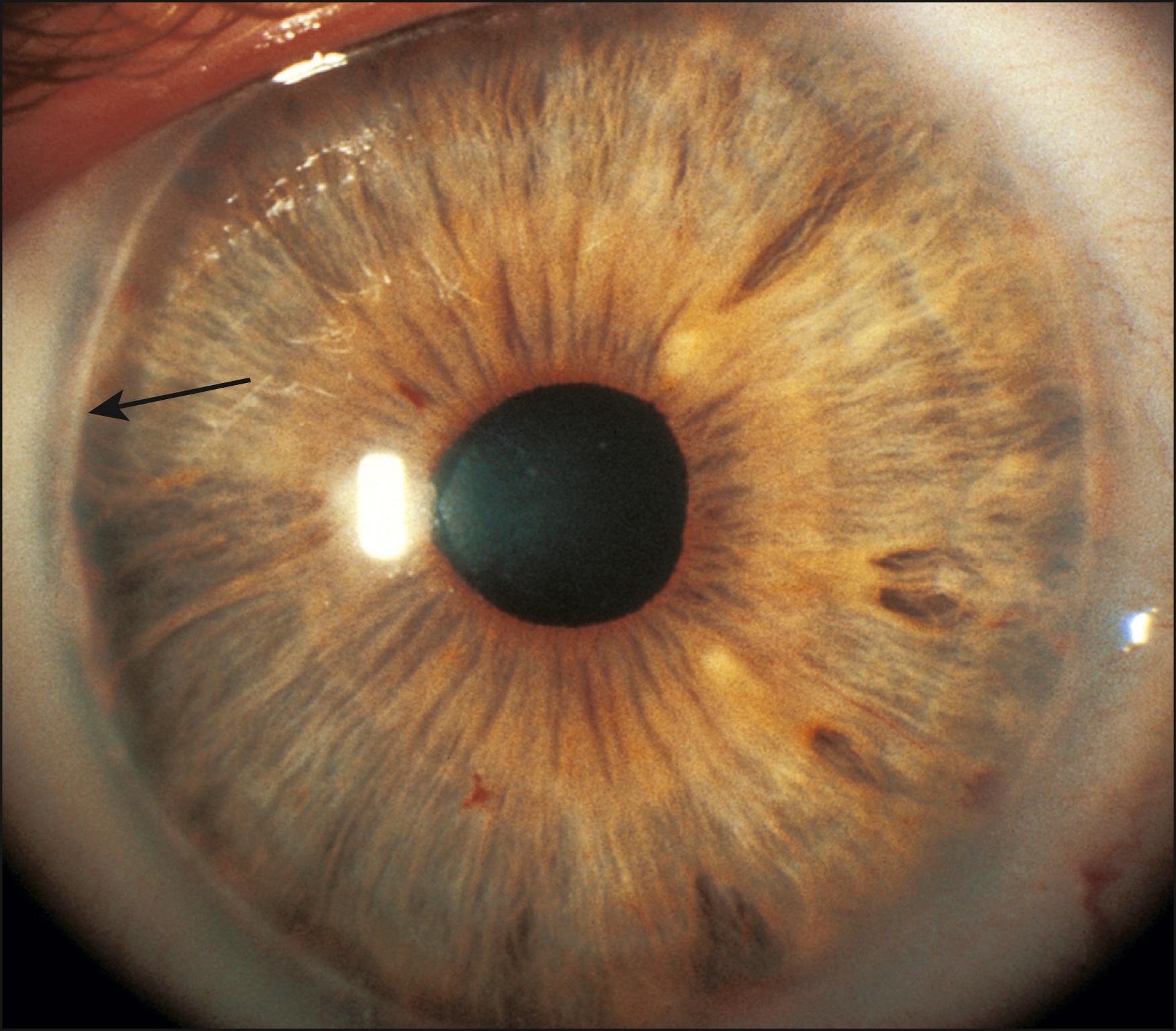
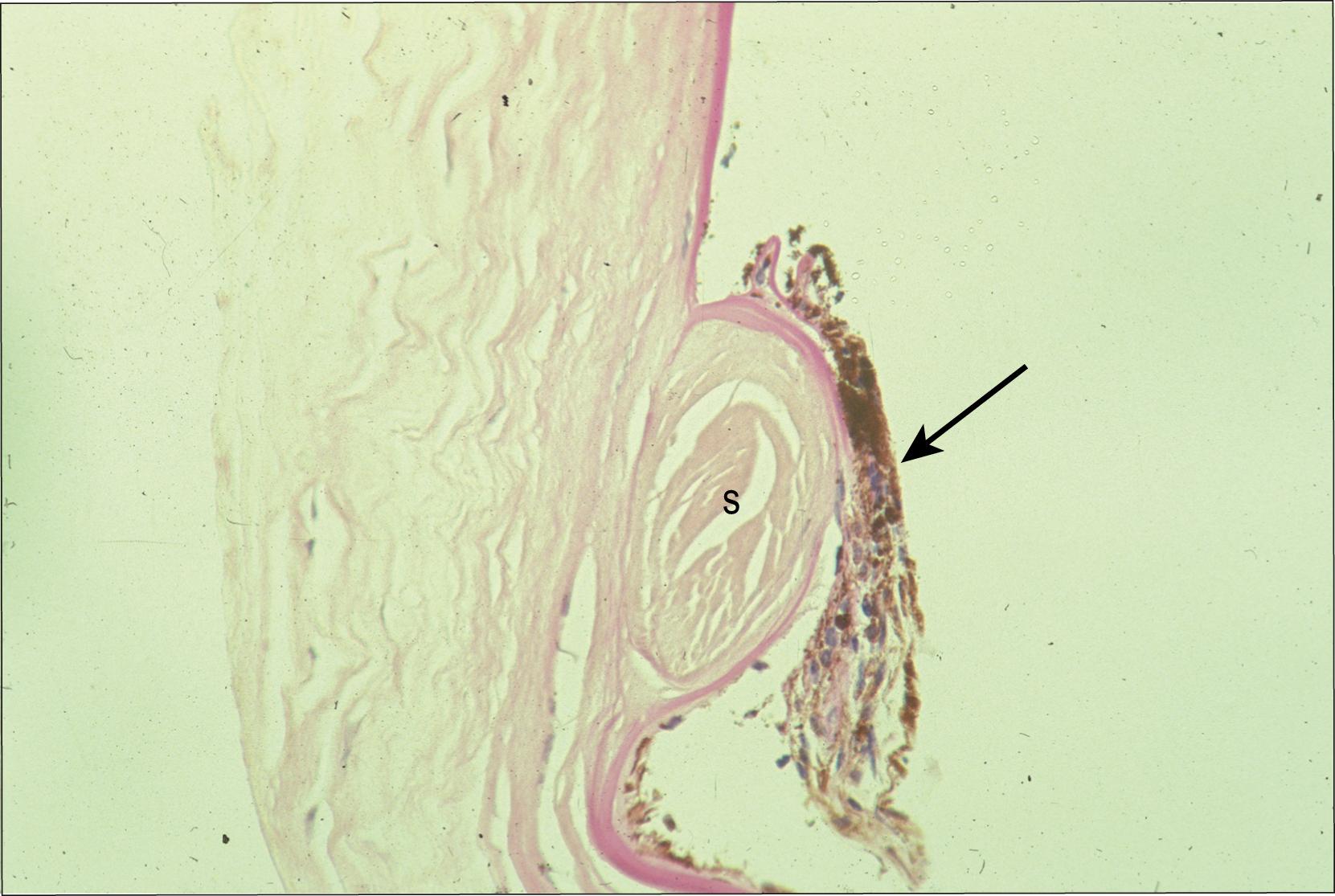
Posterior embryotoxon can also be seen in otherwise normal eyes. These rings, however, are usually much less prominent than those seen in ARS. Patients with isolated posterior embryotoxon are at no increased risk of developing glaucoma.
The iridocorneal angle in patients with ARS can be striking on gonioscopic examination. There may be bands of iris extending across the iridocorneal angle to the trabecular meshwork and to the posterior embryotoxon. These strands are called iris processes but are usually not the fine processes seen in normal iridocorneal angles. They can range from discreet strands ( Fig. 56.3 ) to broad sheets covering several clock hours ( Fig. 56.4 ). These strands are distinct from synechiae, as they do not close the angle. However, the level of peripheral iris insertion tends to be high enough to obscure the scleral spur ( Fig. 56.5 ).
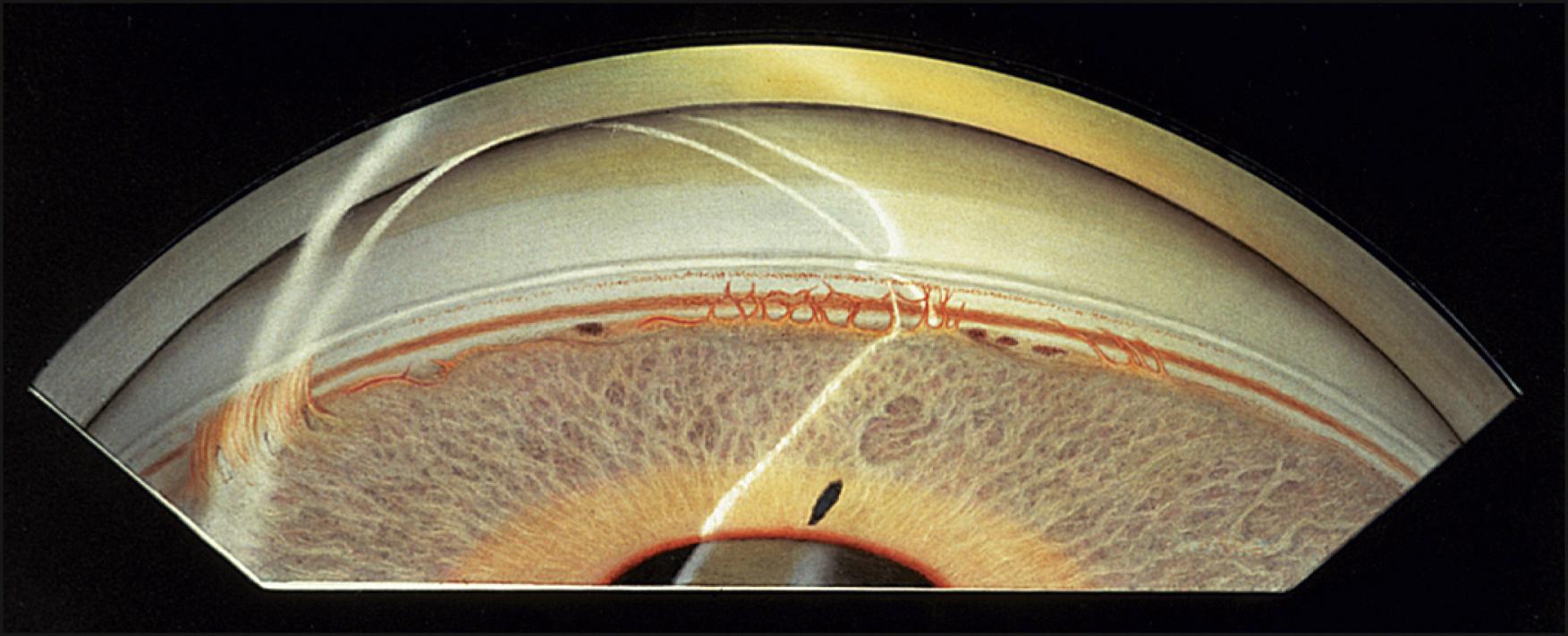
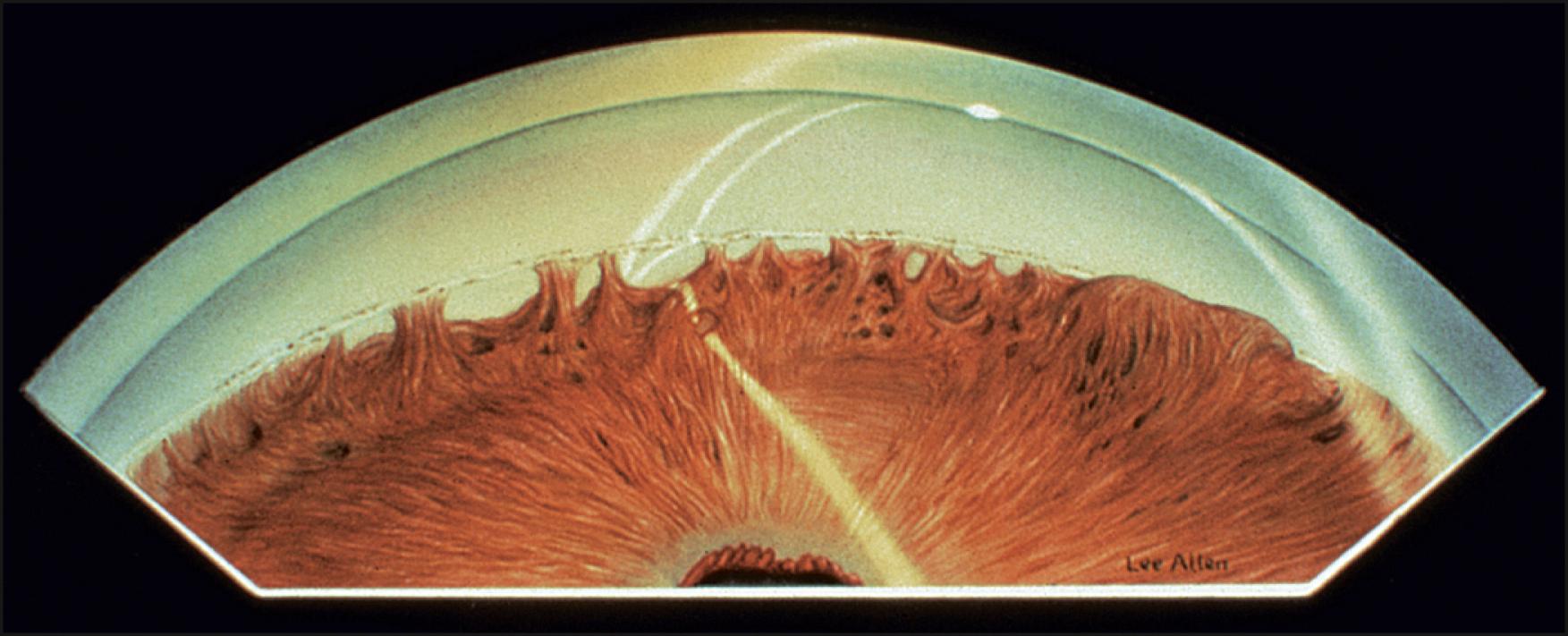
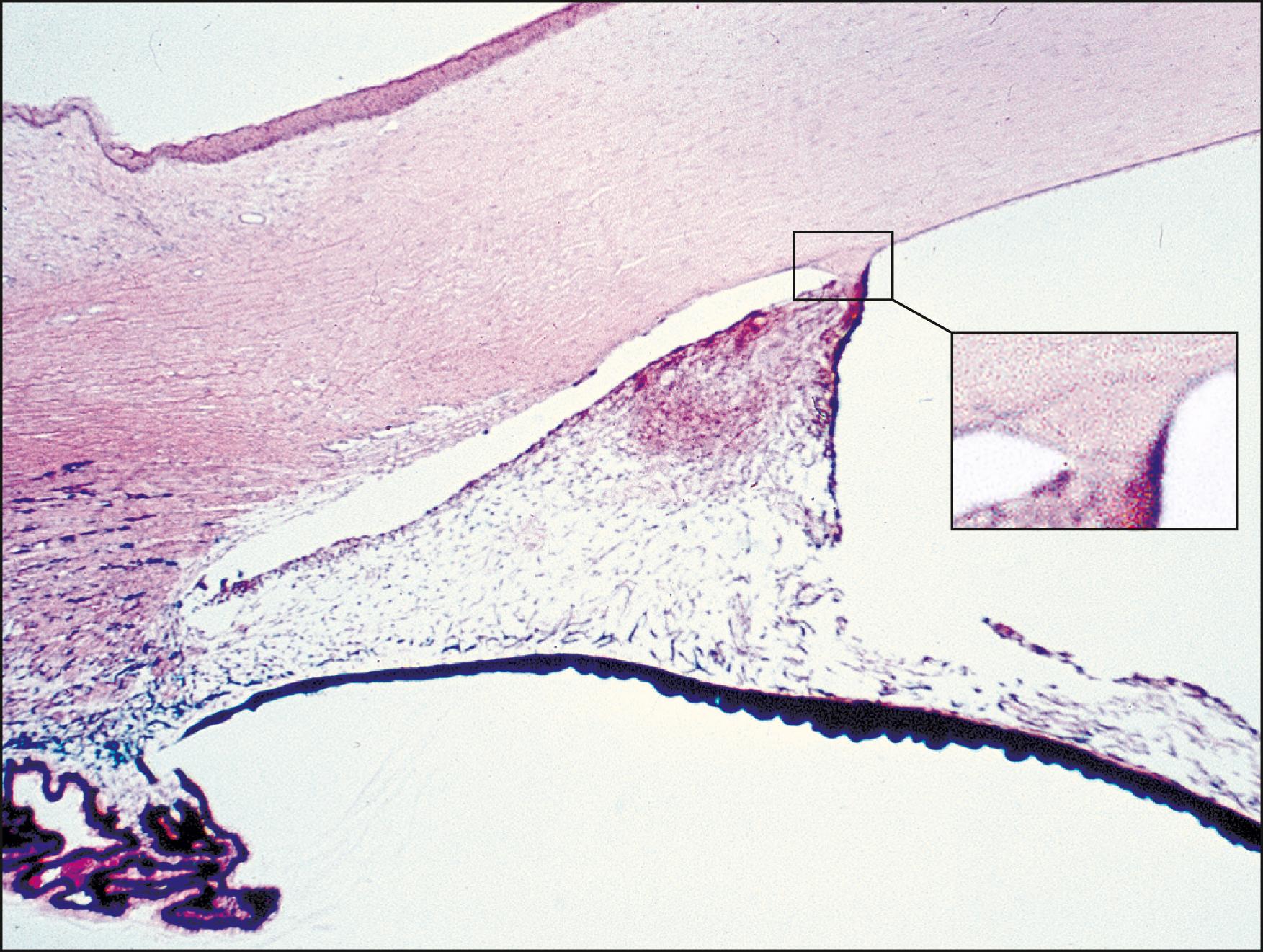
Many patients with ARS have iris hypoplasia. The iris stroma may be very thin, allowing easy visualization of the iris sphincter ( Fig. 56.6 ). These patients’ irides often have a characteristic slate-gray to chocolate-brown color. This characteristic of the irides is so peculiar that it signals to the observer a risk of glaucoma. Patients may also develop displacement of the pupil from the central position (corectopia) ( Fig. 56.7 ). In eyes with corectopia, the pupil is often drawn toward an accumulation of iris process adhesions ( Fig. 56.8 ). Some eyes may develop extra holes in the iris, typically in the quadrant opposite the corectopia ( Fig. 56.9 ). Though often called polycoria , this is more appropriately termed pseudopolycoria . True polycoria requires a sphincter around each pupil and is not associated with ARS; it is extremely rare, with only a handful of cases ever described. , The iris changes in ARS are usually stationary but have been reported to progress in some patients. ,
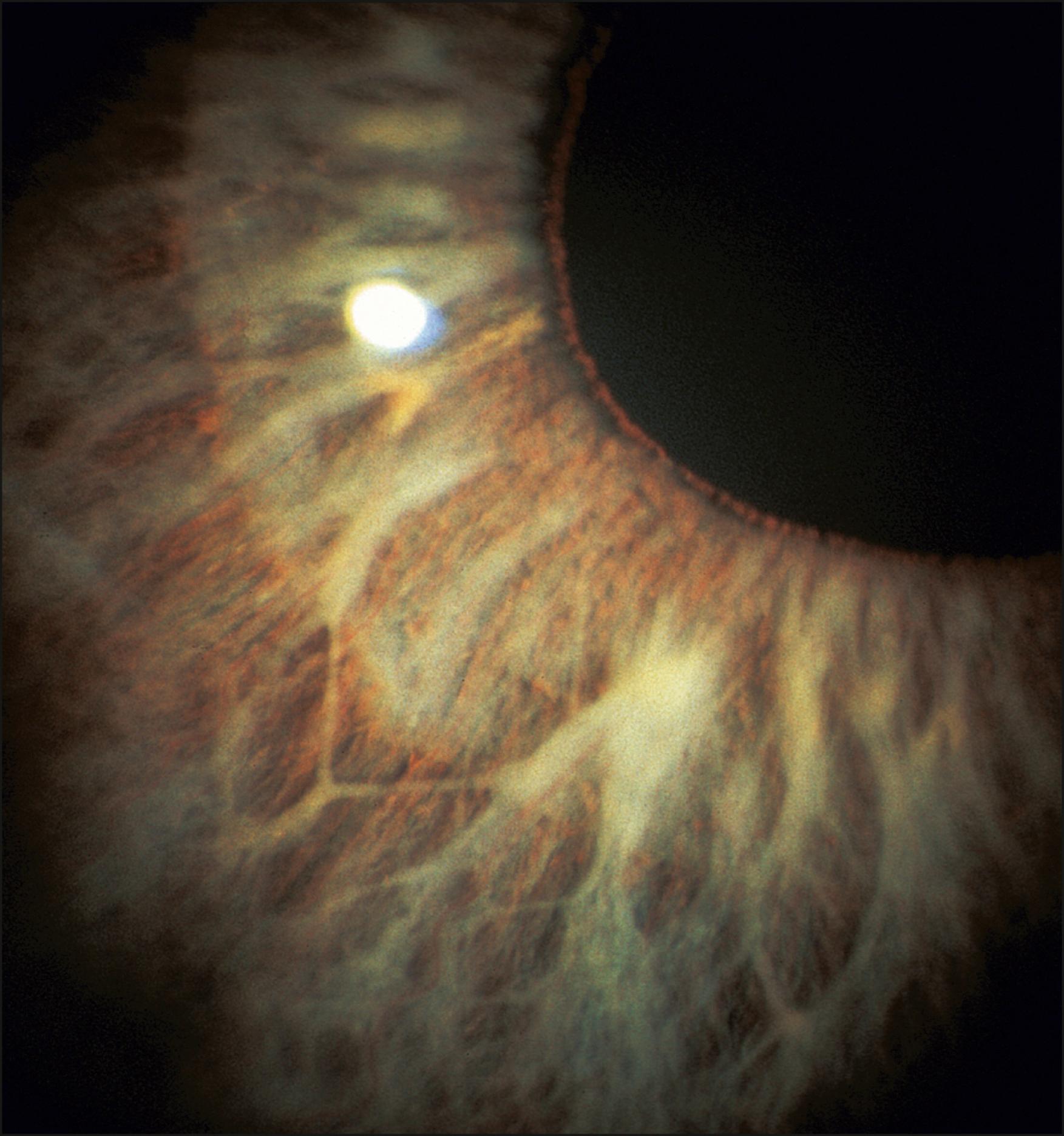
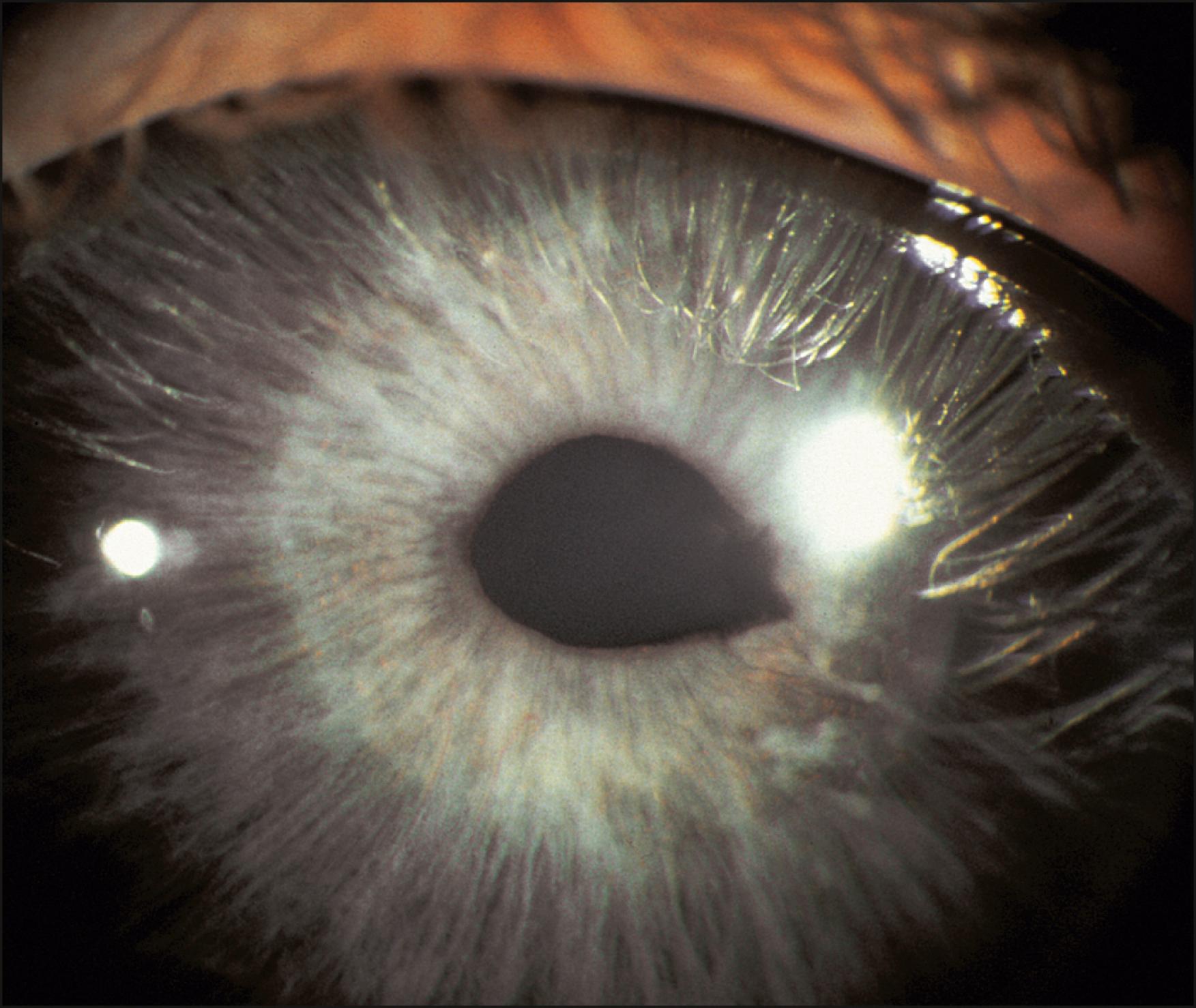


Iris hypoplasia can also be an isolated finding. The iris appearance may be identical to that in ARS; however, there are no other ocular or systemic findings. Despite the lack of associated features, the two are related because both have been found in a single family. Additionally, some patients with isolated iris hypoplasia have mutations in the PITX2 gene, which is one of the ARS genes.
Become a Clinical Tree membership for Full access and enjoy Unlimited articles
If you are a member. Log in here